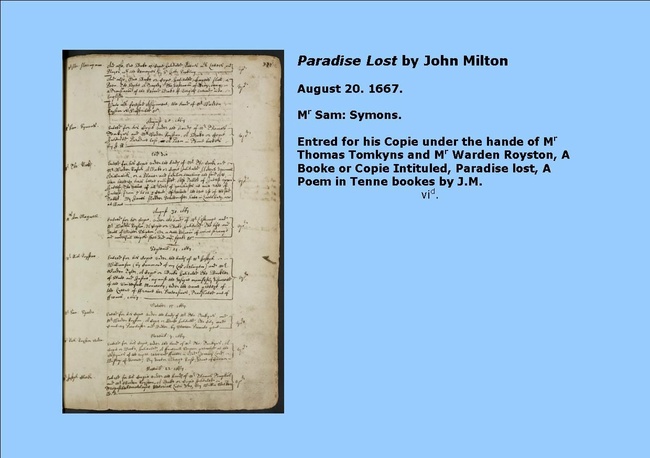TRADITION AND HERITAGE
What is a Livery Company?
- Livery Companies were first created by groups of medieval tradesmen who joined together to promote, protect and regulate their trades
- There are 110 livery companies in London, each representing a discrete profession or trade
- The Stationers’ Company is unique for a 600-year-old company in that over 90% of our members are actively involved in our industries
- Charitable giving, to education, in particular, is a very strong element of the work of all livery companies
- Our charitable activities are focused on education that connects young people with our industries
The History of the Company
In 1403 the Mayor and Aldermen of the City of London approved the formation of a fraternity or Guild of Stationers (booksellers who copied and sold manuscript books and writing materials and limners who decorated and illustrated them). By the early 16th century printers had joined the Stationers' Company and by the mid-century had more or less ousted the manuscript trade. In 1557 the Guild received its Royal Charter and they became a livery company, numbered 47 in precedence.
The Charter gave the Company the right to search for and seize illicit or pirated works. All new titles were entered into series of 'entry books of copies' which became known as the Stationers' Company Registers. Company ordinances of 1562 provided that members had to both obtain from the Wardens a licence to print any work not protected by Royal Grant and enter that licence in the Company’s register. The Stationers’ Register became the written record to which disputes regarding the ownership of copy could be referred. Succeeding copyright legislation confirmed Stationers’ Hall as the place where the right to copy should be entered. Compulsory registration finally terminated in 1923.
Why join the Stationers’?
- 600 years ago most craftsmen in London were itinerant. However, the manuscript writers and illuminators decided to concentrate their efforts and set up stalls or ‘stations’ around St Paul’s Cathedral. Because of this, they were given the nickname ‘Stationers’ and this was the obvious choice of name for the guild they established in 1403
- When printing came to England in the late 15th century, the Stationers had the good sense to embrace it and we have continued to adapt to the many changes in the Communications and Content industries ever since
- The technology may have changed from pen and inks to print and online links but the name has always remained the same
And today?
- Today the Company has nearly 1000 members, the vast majority of whom are senior executives in the complete range of trades within the Communications and Content industries
- Membership is drawn from across the UK and increasingly throughout the world and now includes major companies as well as individual members
- The Company uses Stationers’ Hall for the purpose for which it was built all those years ago: to bring together the major players in our industries so that they can enjoy each other’s company, learn from one another, share ideas and together develop strategies for the future of our industries
- Activities range from formal dinners, informal lunches, lectures, seminars and intimate round-table sessions to online reports and discussion fora.
- Our objectives are:
- to encourage a broad balance of membership
- to deliver industry-relevant events at Stationers' Hall that provide excellent networking opportunities are good value for money and fun
- to maximise the resources of our charity, the Stationers' Foundation and direct them towards causes connected with our industries
- to develop our facilities at Stationers' Hall to make them more accessible to the public and improve their functionality for events
- to play an active part in the work of the Corporation of London
- to create full transparency in our governance procedures
- to preserve our archive and make it accessible to a broader public audience
Charitable Giving
Charitable giving is one of the defining features of a Livery Company and the Stationers’ Company is very proud of its work in education and welfare and the maintenance and enhancement of our Hall.
The demand for the resources of the Foundation is enormous and the income generated from our charitable endowment fund falls well short of our current giving programme and our aspirations for this to grow.
Thanks to the generosity of our members and of our charitable partners, our annual grant-giving now exceeds £350,000 and it is our aim for this to reach £500,000 by the end of this decade.
ROYAL MARINES
The Queen's and Regimental Colours were presented to the 45 Commando, Royal Marines by the Captain-General H.R.H. Prince Philip, Duke of Edinburgh on 29 November 1952 at Floriana, Malta G.C.
H.M. Queen Elizabeth II presented new Colours to 45 Commando on 13 May 1969. The original Colours were then presented to the Master by the Officer Commanding 45 Commando and lodged for safekeeping, with traditional ceremony, in Stationers’ Hall on 18 November 1969 in the presence of the Lord Mayor of London and the Chief of Staff and other Officers of the Royal Marines. This important and unique event is recorded here in honour of the close association between the Corps of Royal Marines and the Worshipful Company of Stationers and Newspaper Makers. The Colours, with commemoration plaque, are sited on the panelling in the centre of the west wall of the Hall.

The Entry of Milton's Paradise Lost in the Stationers' Register
In 1603, the Company was granted a royal patent to form a joint-stock publishing company funded by shares held by members of the Company. Its most profitable patent was for Almanacks in the English language, including the famous or Old Moore. The Stock was intended to be partly charitable, providing work for the many unemployed printers, and the first £200 p.a. of profit was to be distributed in pensions to the Company's poor.
Sir Thomas Davies, Pepys's bookseller was the first 'Stationer' Lord Mayor in 1676, had to translate to the Clothworkers. Since then Stationers have held the office a record twenty-eight times.
The Stationers' Company's School opened in Bolt Court, Fleet Street in 1861, but soon outgrew its premises and in 1894 moved to Hornsey in north London in 1894. It closed in 1983 to be replaced 30 years later by the Stationers' Academy.
In 1931 the newly founded Company of Newspaper Makers was incorporated into the Stationers' Company.
The Lord Mayor of The City of London
The City of London is one of the world’s leading international financial centres. As head of the City of London Corporation, which provides business and local government services to the City, the Lord Mayor of London's principal role today is an ambassador for all UK-based financial and professional services. The Lord Mayor of London is not the Mayor of (Greater) London.
For the year 2021-2022 the Lord Mayor of the City of London was Alderman Vincent Keaveny (who happens also to be a Liveryman of the Stationers' Company)

The Lord Mayor
Alderman Vincent Keaveny was Lord Mayor of the City of London in 2021/22, having served as Sheriff of the City of London for the year 2018/19.
Vincent is a Partner in the international business law firm, DLA Piper, where he advises on finance and debt capital markets transactions in the UK and Europe. Until 2019 he was International Co-Chair of the Financial Services Sector at DLA Piper. In 2014/15 he served as President of the City of London Law Society. He is an Honorary Bencher of Gray's Inn.
Since his election to the City of London in 2013 he has served on a number of City of London Corporation Committees, including Policy & Resources, Finance and Planning & Transportation. He is currently the Chair of the Samuel Wilson’s Loan Trust and a Governor of the City of London School. He took office as Governor of The Honourable The Irish Society in March 2024.
Vincent’s Mayoral theme - People and Purpose - championed a purpose led and people focused UK FPS sector; growing the global competitiveness of the UK as a world leader in ESG and sustainable finance and home to the best and most diverse global talent; driving social mobility at all levels. As Lord Mayor he hosted the inaugural Net Zero Delivery Summit and led the Finance for Impact initiative. He co-chaired the HMT & BEIS sponsored Socio-Economic Diversity Taskforce and is Chair of Progress Together, the financial services membership body promoting greater socio-economic diversity in the financial services industry.
Vincent is a graduate of University College Dublin (BCL) and Trinity College, Dublin (MLitt). He was recognised in 2018 by UCD as its Law Alumnus of the Year. He holds a Doctorate of Science (honoris causa) from City, University of London.
Vincent's interests include theatre and opera. He is the senior independent trustee of the Sir John Soane's Museum, chairs the board of the vocal ensemble, Exaudi, and is a director of Actors Touring Company. He is also a member of the Council of Gresham College.
Vincent is a Liveryman of the City of London Solicitors', the Woolmen's, Distillers', Spectacle Makers’, Stationers’, Framework Knitters’, Upholders’ and Security Professionals Companies. He served as Master Solicitor in 2014/15 and is currently serving as Master Woolman (April 2023 – April 2024).
Vincent was awarded a CBE in June 2023. He is a Knight of Justice of the Order of St. John and recently received an honour from the Vatican as a Knight Commander of the Order of St. Gregory the Great.
Vincent is  married to Amanda, an Intensive Care Nurse and in what spare time he has, he enjoys tennis and walking their Labradors.
married to Amanda, an Intensive Care Nurse and in what spare time he has, he enjoys tennis and walking their Labradors.